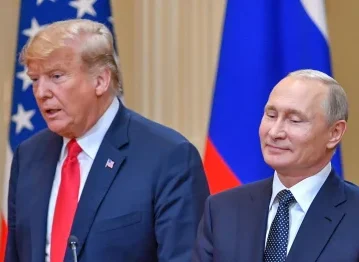
President Donald Trump has raised the diplomatic stakes ahead of his highly anticipated Alaska summit with Russian President Vladimir Putin by saying he believes “Russia is ready to make peace” and that a Trump Putin second meeting could follow — one that he hopes will include Ukrainian President Volodymyr Zelensky. The remarks signal an ambitious push by the White House to convert a bilateral encounter into a broader diplomatic effort to end the war in Ukraine.
What Trump said — and why it matters
On the eve of the Anchorage talks, Trump told reporters and interviewers he thinks President Putin is “going to make a deal” and that the Alaska meeting is intended to “set the table” for a subsequent, larger meeting that could include Zelensky and possibly European leaders. He framed the first meeting as preparatory, with the second — the Trump Putin second meeting — positioned as the forum to seek a definitive agreement.
That framing matters because a bilateral U.S.–Russia summit without Ukraine present risks sidelining Kyiv from discussions about its future. European allies and Ukrainian officials have already voiced alarm that any deal reached without active Ukrainian participation could undermine Ukraine’s sovereignty and territorial claims.
Where and when: the Alaska summit and what comes next
The Trump–Putin summit is scheduled for Anchorage, Alaska — a high-profile choice that the White House says will be followed by additional diplomatic steps if the leaders find common ground. Trump has signaled the second meeting could take place “shortly” after the Alaska talks, and may include Zelensky and other Western leaders. Analysts say the timeline is aggressive given the complexity of the conflict.
Russian signals and U.S. expectations
Moscow’s tone has not been uniformly hostile. Russian officials, including senior Kremlin figures, have welcomed the summit as an opportunity for direct dialogue. Trump’s statement that “Russia is ready to make peace” echoes Moscow’s public statements praising the chance to discuss a settlement, though Kremlin language tends to be cautious about the precise terms such a peace would entail. Observers warn that Russia’s public willingness to “talk” does not automatically equate to concessions on territory or military aims.
Where Ukraine stands
Ukraine has been vocal that any agreement affecting its borders or sovereignty must involve Kyiv directly. Ukrainian leaders and many European partners have warned against deals that could lock in territorial losses or that fail to include guarantees for Ukraine’s security and sovereignty. Excluding Zelensky from early negotiations — or proposing a post-hoc inclusion in a second meeting — has already raised concerns among Kyiv and its allies that critical decisions might be negotiated without Ukraine’s consent.
The strategic logic — and risks — behind a Trump-led trilateral push
From Washington’s perspective, Trump appears to be betting on personal diplomacy: leveraging direct leader-to-leader talks to produce breakthroughs outsiders cannot. A successful Trump Putin second meeting that includes Zelensky could, in theory, create a rapid diplomatic pathway to a ceasefire or broader settlement. Proponents argue that private bargaining among the principals could unlock compromises that lengthy multilateral processes cannot.
But the risks are substantial. Critics say bilateral U.S.–Russia engagement — especially if it sidelines allies — could produce an agreement that prioritizes a quick headline over durable security guarantees for Ukraine. There’s also a diplomatic cost if European partners feel excluded, which could fray transatlantic unity at a sensitive moment.
What negotiators will likely focus on
If a second meeting is to happen, negotiators will need to tackle several core issues:
- Ceasefire terms: Immediate reductions in violence and mechanisms for monitoring compliance.
- Territorial questions: Any discussion that touches on borders or autonomy for occupied regions will be contentious.
- Security guarantees: Ukraine will seek binding guarantees preventing a return to large-scale aggression.
- Sanctions and incentives: How to calibrate sanctions relief or economic incentives to encourage Russian compliance without rewarding aggression.
Each of these points is politically sensitive and technically complex — making a quick second-meeting breakthrough unlikely without extensive preparatory work.
Reactions from allies and analysts
European leaders and many NATO officials have stressed that Ukraine must be central to any peace process. Some analysts worry the U.S. initiative could unintentionally reward Moscow if not tightly coordinated with Kyiv and European governments. Others say that if Trump can secure meaningful concessions — particularly a verifiable ceasefire — the diplomatic payoff could be substantial. For now, the international response is cautious optimism mixed with deep skepticism.
Bottom line: a high-stakes diplomatic gamble
Trump’s suggestion that “Russia is ready to make peace” and his push for a Trump Putin second meeting that includes Zelensky represent an ambitious attempt to leverage high-level diplomacy to resolve a protracted conflict. The potential upside — a negotiated halt to hostilities — is enormous. Equally enormous are the pitfalls: sidelined allies, unsettled Ukrainians, and a rushed settlement that lacks enforcement mechanisms. As the Alaska summit unfolds, the world will be watching whether the first meeting truly sets the table for an inclusive, enforceable, and Ukraine-respecting second meeting — or whether it becomes a diplomatic showpiece that leaves the real issues unresolved.
